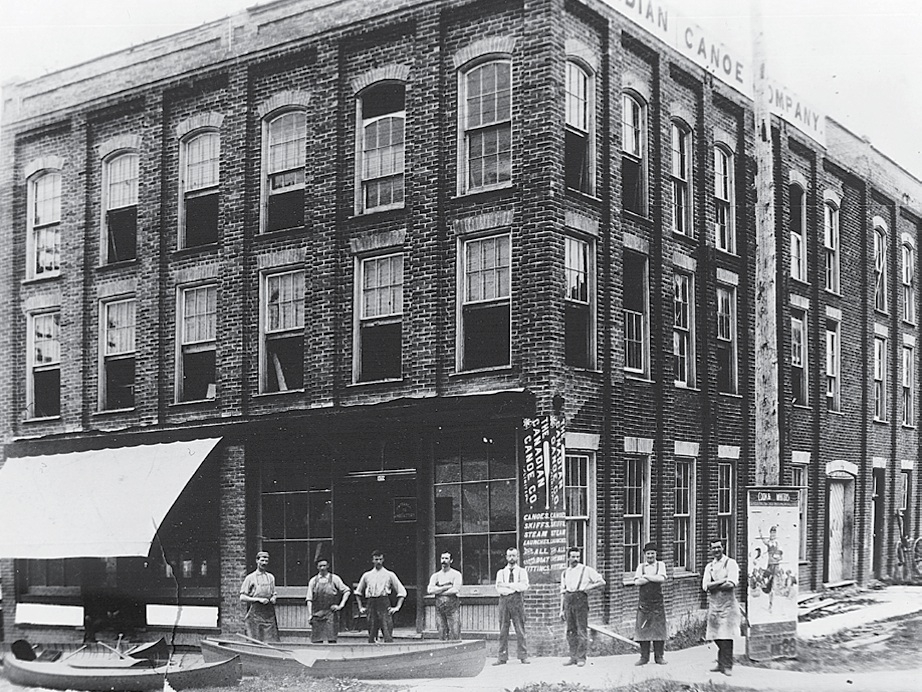This editorial originally appeared in Canoeroots and Family Camping magazine.
A fabulous new book called The Canadian Canoe Company and the Early Peterborough Canoe Factories (Cover to Cover Press, 2011) has got me thinking about reincarnation.
According to author Ken Brown, canoe building in Peterborough, Ontario, effectively died in the early 1960s with the Canadian Canoe Company ceasing operations in October 1961 and the Peterborough Canoe Company declaring bankruptcy soon after. But the presence of this book and a quick cruise on the World Wide Web indicates that the products of these venerable canoe companies are still very much on people’s minds.
The demise of industrial canoe building in Peterborough was real enough. Companies that had skillfully grown from an emerging 19th century cottage and craft activity into seven or eight canoe-building factories with robust domestic and international markets, struggled after WWII. Aluminum and fiberglass building techniques—innovations honed in wartime aircraft manufacturing— lent themselves naturally to canoe building. But tooling up for new materials and new building techniques was expensive. And training or retraining a skilled woodworking labor force to make canoes out of plastic or metal was also costly. It was only a matter of time before the wooden canoe companies floundered.
Yet Peterborough thrived through nearly a hundred years of uncommon industrial success. Ken Brown tells us that in a country bordering three oceans, in 1930 a quarter of the 778 Canadians involved in the building of small boats were employed in the land- locked center of the continent by Peterborough area firms, generating a third of the annual $2 million sales in this area of the economy.
After WWII, this tapered back and, after the closure of the Peterborough companies, passed to the skilled hands of later generations of small builders and hobbyists who continue to keep the tradition vibrant.
Today, you can buy Peterborough canoes at auction. Reprints of old catalogues are available for sale in hard and soft cover. The iconic company logos are available as decals for the growing corps of builders and rebuilders from Pacific to Atlantic and Arctic to Caribbean who still love Peterborough shapes in their shops.
And then there are the T-shirts and calendars, and the advertisers who for the past 50 years have freely employed canoe imagery. Selling charcoal, beer, milk or maxipads with canoe imagery cashes in on the fact that from explorers, surveyors, itinerant clergy, police and fur traders to modern day hunters, anglers and recreational paddlers, Peterborough canoes have been involved in just about every aspect of life beyond the fringe in North America. They are part of Canada’s heritage and, as Ken Brown reminds us, part of the history of the U.S., U.K. and countries even farther afield. Advertisers know that consumers are drawn to canoe imagery because this vessel—the Peterborough canoe in particular—is part of who we are.
James Raffan is thinking of coming back as an explorer, writer and executive director of The Canadian Canoe Museum.
This article appeared in Canoeroots & Family Camping, Spring 2012.




